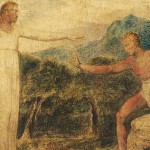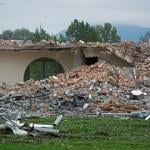 Profound and Pastoral, Scholarly and Faithful!
Profound and Pastoral, Scholarly and Faithful!
“Jesus of Nazareth: Holy Week: From the Entrance Into Jerusalem To The Resurrection” is the sequel to Pope Benedicts XVI’s first book on the life of Christ: “Jesus of Nazareth: From the Baptism in the Jordanto the Transfiguration.” What I am writing, I write as an Anglican priest and professor who has read previously only a few articles by Pope Benedict XVI (back when he was Cardinal Ratzinger). I’m happy to say that I find Benedict XVI’s “Jesus of Nazareth” a wonderful commentary on the life of Jesus Christ. While it’s very clear that the Pope is a scholar, it’s also clear he is a man of deep faith: I want both of these in a good commentary on the life of Christ! This Volume 2 of the Pope’s work makes me want to go out and buy his first volume as well. “Jesus of Nazareth”, especially, makes for wonderful Lent, Passiontide, and Eastertide reading!
I heartily recommend “Jesus of Nazareth: Holy Week: From the Entrance Into Jerusalem To The Resurrection” to all Christians who want to understand Jesus and His teachings better, to be closer to Jesus Christ, and to become more faithful disciples of His in the process. Any writer who manages to combine scholarly erudition with readability and deep insights into faith and theology deserves to be read. This is especially true if the writer is the present Pope!
In his forward, Benedict places his work, and that of scholarly exegesis in general, firmly in its theological context, as a response to the historical-critical exegesis that is even now exhausting itself. In other words, his work will combine the scholar’s care for history with the saint’s devotion to and care for the biblical text. Benedict says that he is not writing another “life of Christ” but wants simply to present the figure and message of Jesus.
When reviewing books, especially ones of a theological nature, I like to look at both the most difficult passages to see if the author will “wimp out” on the reader and to look at the most dense and important passages. Benedict states that the teachings of Jesus on eschatology near the end of the Gospels can be described as “the most difficult text in the whole of the Gospels?” So how does the Pope handle these difficult passages? With great skill and understanding. In essence, he looks at these passages through three temporal lenses. First, he sees them as being in continuity with the tradition that came before. Second, he sees a historical fulfillment in the destruction of the Temple.
Third, he sees them in terms of an eschatology that is beyond our time and reality. I believe this is a faithful way to understand these difficult passages and may be of great help to perplexed Christians. Rather than seeing a naïve and simplistic connection between Jesus’ teaching and the end of the world, Benedict sees in them as well “a time for the Gentiles.”
Being an Anglican, and not a Roman Catholic, I wanted to see how Benedict would handle “the theology of the words of institution.” Benedict begins with a helpful reminder that the words of institution belong in the context of prayer, “the thanksgiving that leads to blessing and to transformation.” In the breaking of the bread, we see the hospitality and caring of God that is to be applied in the caring nature of God’s Church as well. Protestants may not be satisfied with Benedict’s explanation of how Christ can say “This is My Body” while He is still standing there in the flesh, but Benedict expresses Jesus’ meaning without being polemical. In essence, by way of anticipation, Jesus knows that He will indeed offer His life to His disciples and is already in the process of doing it. Nothing very controversial here for many of us.
On a more personal and less theological level, I find that in many places Benedict’s insights not only helped me to understand certain passages better but also to know their deeper meanings. He does a wonderful job of showing how various passages of the Bible all are brought together in parts of the life of Christ (and some of you thought Roman Catholics don’t know their Bible!) For example, I love Benedict’s discussion of Jesus’ passionate prayer in theGardenofGethsemane. Even here, Benedict always keeps the relevant scholarship before, as a means of better understanding the passage at hand.
There are too many other important passages to go through, but I thought Benedict’s handling of Christ’ cry of dereliction on the Cross was very good, placing it, as he does, in the context of what has been called the “corporate personality” of the Psalms. This is in contrast to the individualistic way we tend to read the Scriptures. In other words, Benedict allows for the importance of private piety but always ties them to the life of Christ and therefore the life of the whole Church.
In summary, what we have in Pope Benedict XVI’s “Jesus of Nazareth” is an explanation of the most important man who brought the most important message. It just happens to be written by, arguably, the most important (though all are equal in God’s eyes) Christian alive today. Intelligent and clear, faithful and forceful, I’m sure it will bless the lives of many! My prayer is that “Jesus of Nazareth” will bring many Christians closer to Jesus of Nazareth.
Benedict XVI organizes his book in the following way:
I. The Entrance intoJerusalemand the Cleansing of theTemple
1. The Entrance intoJerusalem
2. The Cleansing of theTemple
II. Jesus’ Eschatological Discourse
1. The End of theTemple
2. The Times of the Gentiles
3. Prophecy and Apocalyptic in the Eschatological Discourse
III. The Washing of the Feet
1. The Hour of Jesus
2. “You are Clean”
3. The New Commandment
4. The Mystery of the Betrayer
5. Two Conversations with Peter
6. Washing of Feet and Confession of Sin
IV. Jesus’ High Priestly Prayer
1. The Jewish Feast of the Atonement
2. Four Major Themes of the Prayer
V. The Last Supper
1. The Dating of the Last Supper
2. The Institution of the Eucharist
3. The Theology of the Words of Institution
4. From the Last Supper to the Sunday Morning Eucharist
VI. Gethsemane
1. On the Way to theMount of Olives
2. The Prayer of Jesus
VII. The Trial of Jesus
1. Preliminary Discussion of the Sanhedrin
2. Jesus Before the Sanhedrin
3. Jesus Before Pilate
VIII. Crucifixion and Burial of Jesus
1. Word and Event in the Passion Narrative
2. Jesus on the Cross (this is subdivided into 8 sections)
3. Jesus’ Death as Reconciliation and Salvation
IX. Jesus’ Resurrection from the Dead
1. What is the Resurrection of Jesus?
2. The 2 Different Types of Resurrection Testimony
– the Confessional Tradition
– the Narrative Tradition
3. Summary: the Nature of Jesus’ Resurrection and its Historical Significance
Epilogue – “He Ascended into Heaven”











